How Fender Offsets Are Helping Shape Music (Again)
Since they were first produced in the 1950s, offset guitars and basses have provided tools for seasoned and aspiring musicians alike to discover new voices.
Culturally, we know and love them as partners in crime to the indie, alternative, and no wave/punk scenes, and for their versatility and flexibility that continually inspire sonic experiments that break the norms. Notable players who’ve recently been spotted repping their offsets include Molly Rankin of Alvvays, Alicia Bognanno of Bully, members of Warpaint and hundreds, maybe even thousands, of new players today. But, let’s get real: why exactly are offsets so desirable?
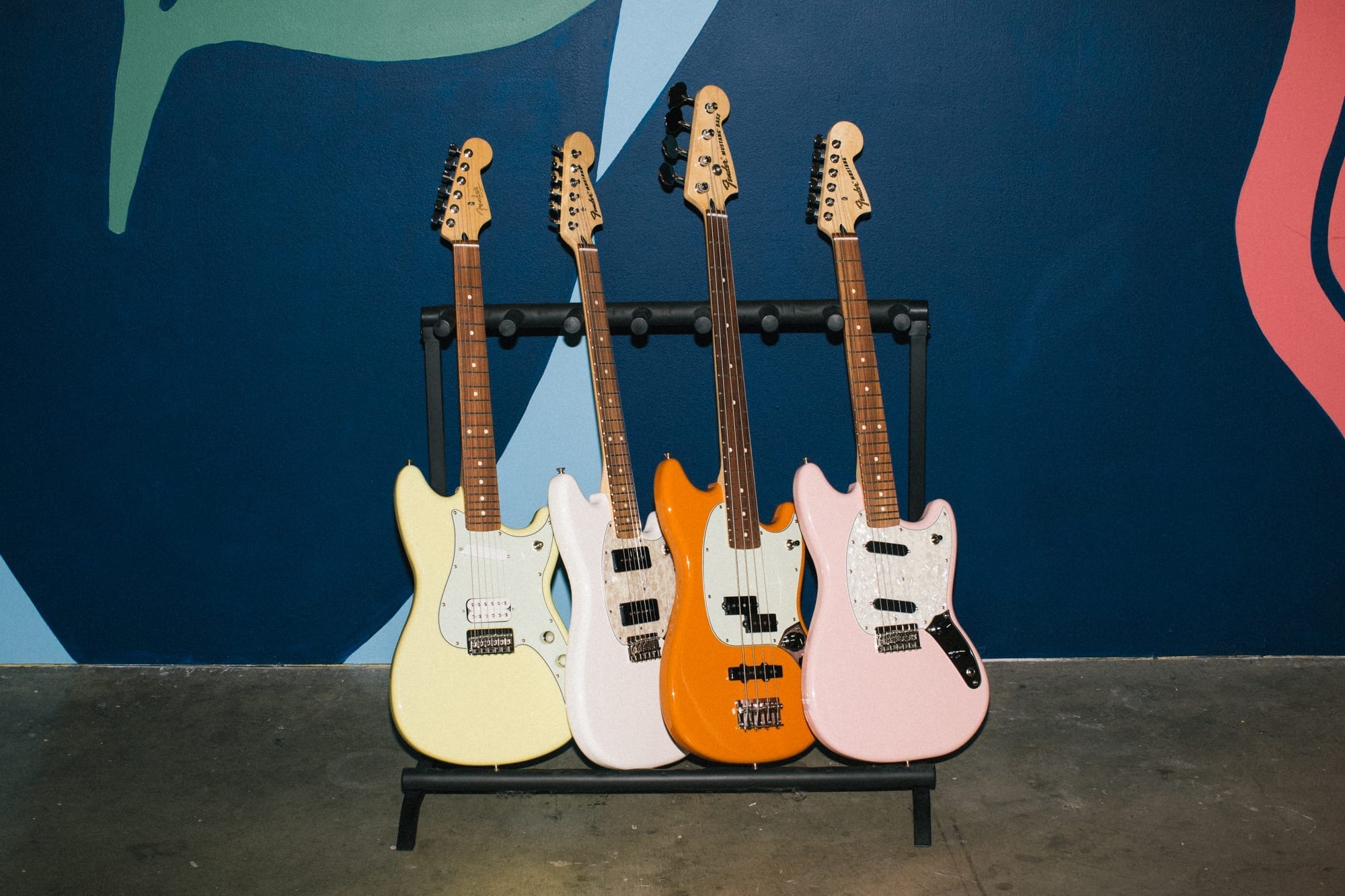
The Culture, Technology, and Movement
Let’s start with what makes an offset an offset in the first place. There are four major qualities that make up what we would consider a modern-day offset:
-
- An asymmetrical “offset” body
-
- Shorter neck length—between 22” and 24”
-
- Lighter in weight
- Affordability (unless you’re buying vintage)
While you can look at any guitar with an asymmetrical body shape and call it an offset, the Fender Offset series evokes music and youth culture, and a movement that dates back to the late 1950s. In 1958, Fender introduced its first professional offset, the Jazzmaster. As you might guess from its name, the Jazzmaster was initially created with jazz musicians in mind—its asymmetrical contoured body shape was designed to make it more comfortable to play while seated than Fender’s classic Teles and Strats. An offset-bodied bass guitar, the Fender Jazz Bass, followed in 1960. But while Fender envisioned their new creations as high-end instruments for top-level players, the newfound versatility in the sounds they offered—specifically the Jazzmaster’s innovative tremolo system—instead captured the attention of a completely opposite type of musician; young, rowdy teenagers riding the wave of the emerging genre of surf rock.
 Kathy Marshall performing with Eddie and the Showmen in 1964 with her custom Jaguar
Kathy Marshall performing with Eddie and the Showmen in 1964 with her custom Jaguar
Whether it was its comfort, aesthetic, or tone—or a combination of all three—the wide success of the Jazzmaster among instrumental rock musicians and wavy surf communities created the desire for simple, affordable, and smaller-bodied options among a generation of new players. Prior to the Jazzmaster, Fender had introduced the Duo-Sonic, its first “student model” in 1956, offering beginner and young players small, lightweight guitars they could comfortably (and affordably) learn on, but it wasn’t until 1964 that the company unveiled the first offset in its student series: the Mustang.
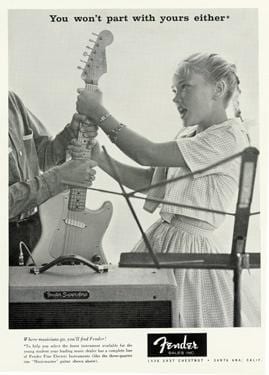
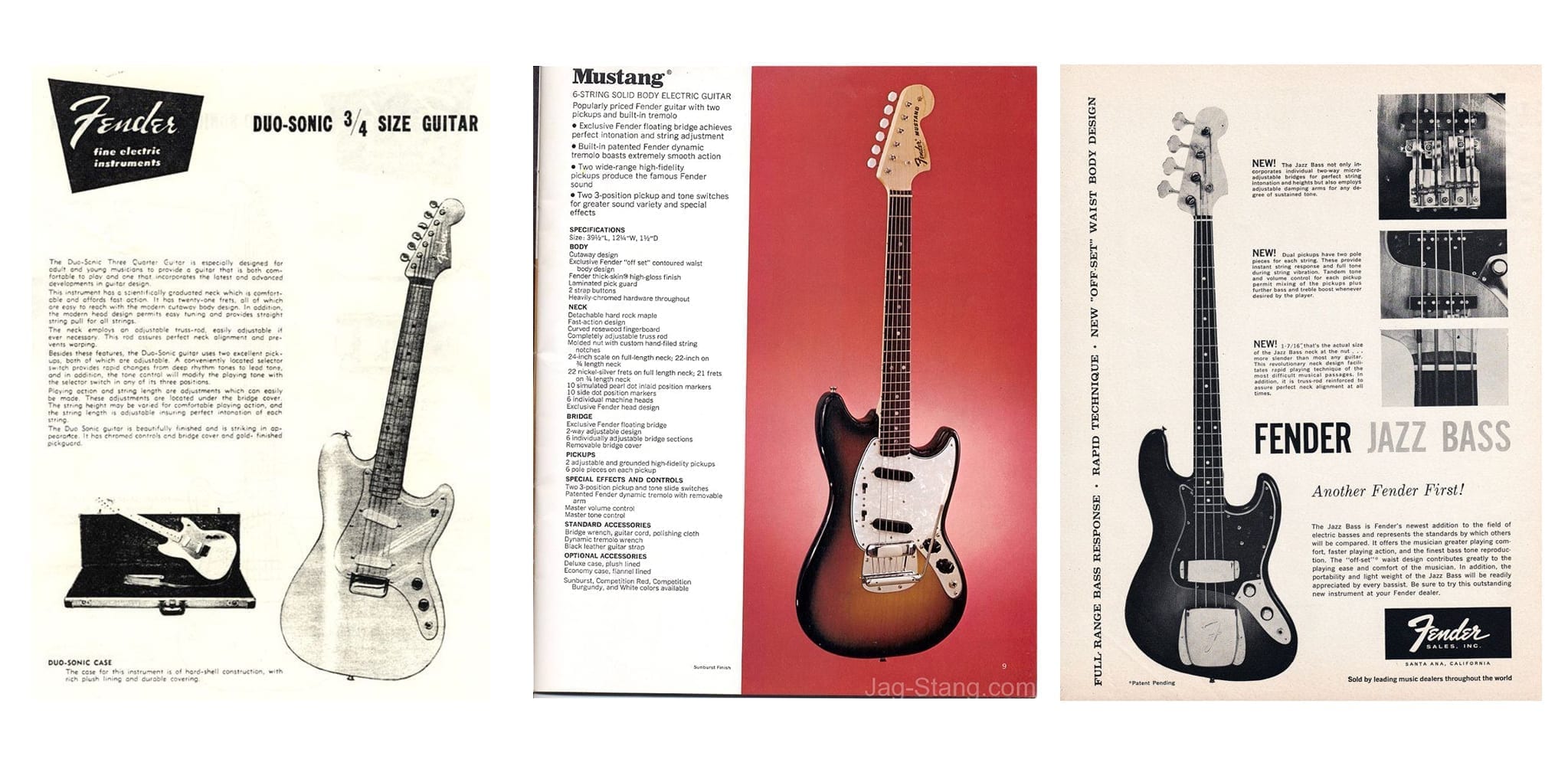
While the Mustang’s body, weight, and neck scale resembled the earlier student model Duo-Sonic, its offset body and tremolo bridge system were modeled after the Jazzmaster—essentially taking the best of both worlds and making an inclusively versatile instrument. Shortly after, the two-pickup Duo-Sonic and single-pickup Musicmaster (another early student model) were upgraded with slightly bigger and offset bodies, and the company started offering them in small to medium-sized neck options. Following the success of these shorter scale guitars, Fender released what would be the last original bass designed by Leo Fender himself before the companies infamous shift to CBS—The Fender Mustang Bass. From there, the rest is history.
The Changing Shape of Music Culture
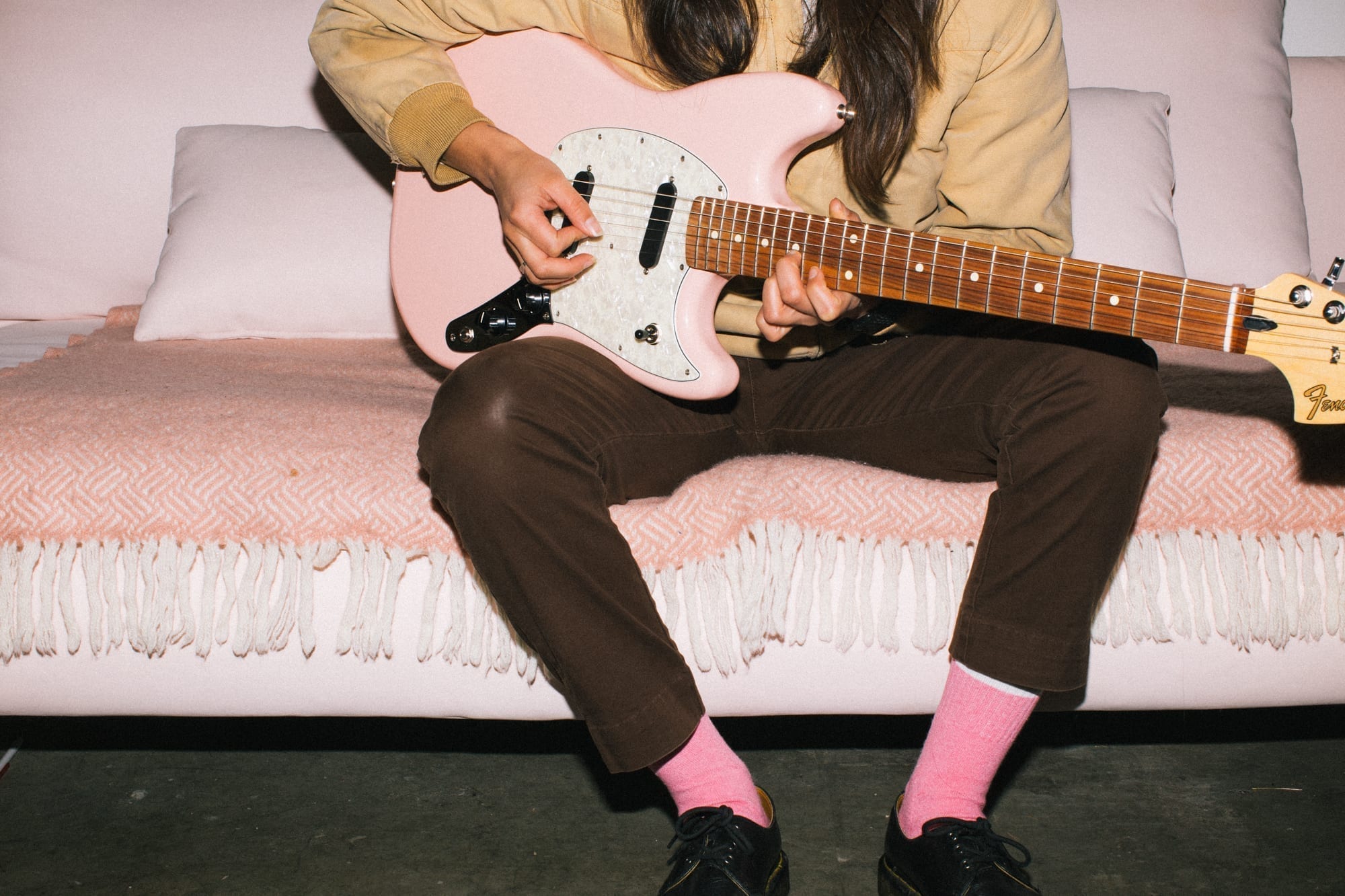
Due to changing music trends in the ’70s, Fender officially discontinued the instruments in the ’80s. But the versatile, inclusively designed offsets struck a chord with the burgeoning punk, new wave, and no wave scenes. Their sleek, simple design made them accessible to players who valued enthusiasm over expertise, and their quirky aesthetic made them a beacon for musical rebels and innovators while the smaller neck and body size offered an easy to carry, road ready instrument—praised by road dogs and bedroom players alike. And, importantly, these now-vintage instruments could be purchased relatively cheaply, secondhand. The identification of offsets with underground music stuck, and, bolstered by the rise of grunge, shoegaze, and indie-rock—and their adoption by icons such as Kurt Cobain, Liz Phair, and the Riot Grrrl Movement—Fender began reissuing offsets in the ’90s. They’ve remained a staple of independent music culture ever since.
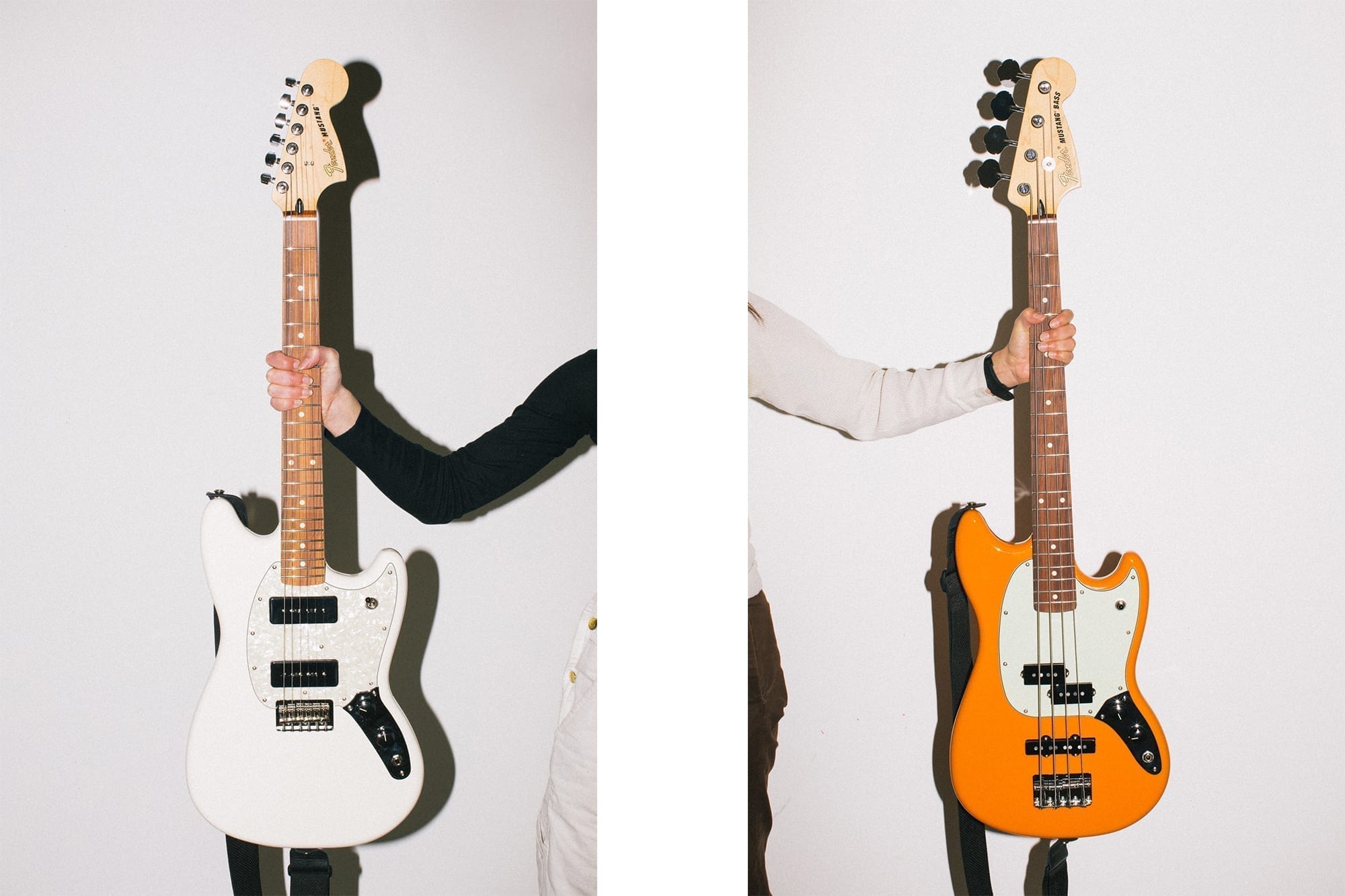
So, offsets have been around since 1958. Cool, but what about that new, new?
One of the standout qualities of the 2017 offset series guitar and basses are their thick skin on the road. Although they are small, lightweight, and come in new high-end color finishes, don’t let their looks fool you—their bodies are nearly indestructible. The 2017 Fender offsets are offered with three pickup options—humbucker, single-coil or P90—a number of unique vintage-style colors, and a sturdier body design than ever. Plus, they are affordable, with prices starting at just over $500. They are a dream, and their popularity among indie musicians shows no sign of slowing down, particularly amongst women/non-binary and LGBTQ players. Erika M. Anderson of EMA, Chelsea Wolfe, Jessica Dobson of Deep Sea Diver, and Nik West are among the many musicians who have strummed their praises in conversation with She Shreds.
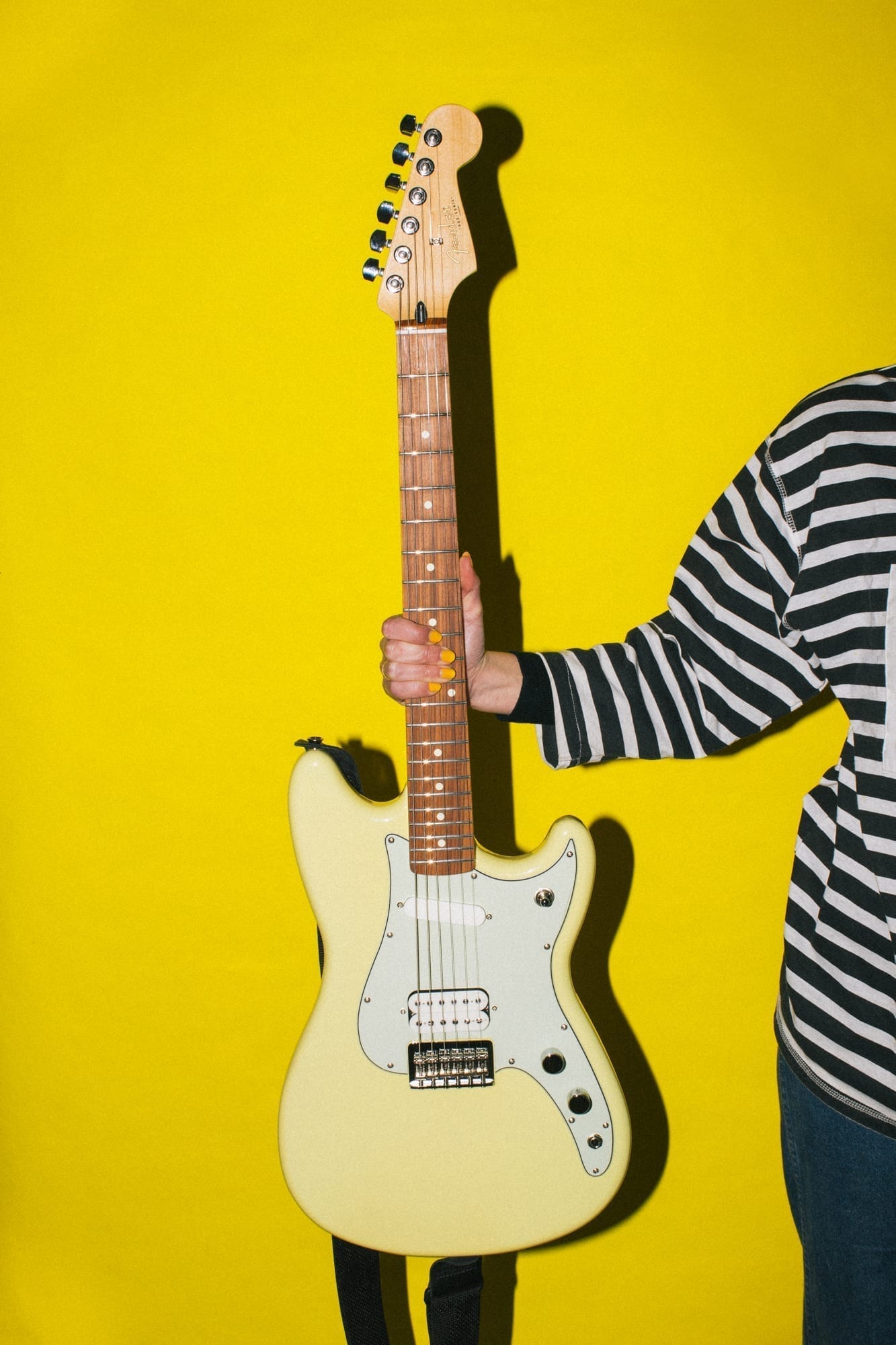
Check out our brief timeline of offset history for more dates, innovations, and pivotal moments you should know. You can find the specs and technical notes for each instrument model on the Fender site, but we’d rather use this space to pass the platform on to everyday offset users (randomly chosen from our #1RiffADay and the #FenderOffset on Instagram) to answer the question:
What makes an offset so desirable?
Name: Tilly Murphy (@fritzkid)
Playing For: 4 Years
Current Project: FRITZ
Current Set-Up: Olympic White Fender Mustang. Boss distortion pedal. Fender Frontman amp. Steinberg UR-12 Interface. Novation Launchkey Mini MIDI. Shure microphone.
“Sophie Hopes of the Perth band Tired Lion gifted me her Mustang at one of their shows in Sydney—said it was a way for her to encourage a new and upcoming artist like me, which I’m so grateful for. She even said something to me like, ‘Playing a different guitar to what you’re used to can bring you new song ideas,’ which is true because within the first few days of using it I had so many chords and new melodies in my head.”
Aesthetic. Having a good looking guitar is important!
Weight. I have no upper body strength and have no issue lugging my Mustang around with me, and the slightly shorter-scale neck makes playing easier, too.
Tone. I believe the tone of this guitar could work for every musician of every genre. (Plus if you’re anything like me, a HIGH priority is to give your Mustang a name. Mine’s Nana. Treat it like a child and it will last you a lifetime.)
Name: Jazmin Najera (@minutesfromjunesongs)
Playing for: 15 years
Current project: Minutes from June
Current setup: Fender Mustang 90. Fender Hot Rod Deluxe amp. Boss distortion. TC Electronic Ditto Looper. MXR reverb pedal. SM58 mic.
“I first saw the Mustang 90 at a local guitar shop and I was immediately drawn to the color. It was one of the most beautiful guitars I had ever seen. I tried it out and I was really impressed with the sound! I like playing garage rock kinda stuff, I’m big on distortion and overdrive, and the Mustang sounded great with my pedals, but I also appreciated the warm tone when I played it clean. And seeing artists I admire play Mustangs was definitely a selling point. I know Sadie Dupuis has the same guitar in white!”
Weight and Feel. The tone could be incredible, but if it doesn’t feel right and if it doesn’t feel comfortable in my hands, I won’t play it.
Tone. I looked for something that sounds great and offers me something I can’t get with the guitars I already have.
Aesthetic. My first choice, based on aesthetic alone, would’ve been the Shell Pink Mustang, but I wasn’t looking for single coils. Tone definitely takes priority over look!
Price Point. The price point is unbeatable—Mustangs are affordable. Overall, I think the new Fender offsets are fantastic guitars. I love the versatility and the range of sounds I can achieve.
Name: Intan Descenika (@intandescenika)
Playing for: 6 months
Current Project : Mery Celeste’s
Current set-up : Orange Fender Duo-Sonic. Hotone Blues Overdrive. Boss Chorus. Keeley Compressor. Hartke Guitar Amps. iRig 2 Amplitube. Pro Tools.
“It’s necessary in my band [to have a] kind of vintage tone—not really sharp or punchy but you can still feel the thick of the sound. Especially the single coil pickup makes the sound really great, clear, bright, and also warm and vintage sounding.”
Tone. It sounds like a mix between the Stratocaster and Telecaster. The offset gives me a perfect combination of both guitar sounds—a perfect new tone.
Price Point. It’s so worth it—a high quality pro guitar for about middle budget.
Aesthetic. It’s such a beautiful guitar, and it has a matte color and the Mustang shape, which I love. It’s not really huge on me, which is good. I choose Orange Capri because my band has a single titled “Orange,” so the color is meaningful to me.
Name: Raegan Labat
Playing For: 1 Year
Current Project: No current projects, but I was in a Devo cover band over the summer
Current Set-up: Capri Orange Fender Mustang PJ Bass. Acoustic B20 amp.
“Short scale, variety of pick-ups, and light weight seemed like the perfect first bass to own. There were a lot of bassists using Mustang and Jazz bass guitars, so it influenced to go Fender. Because I got the guitar when it was fairly new on the market, I didn’t see many people playing this model. Now, I’ve been to so many shows where the bassist is playing this offset model. It’s a little reassuring and inspiring—like when I saw Downtown Boys switch to this bass or when I saw The Babe Rainbow switch to this bass.”
Tone. I was new to bass when I jumped in and bought one, so I wanted something that I could trust sounded good and gave me versatility. I liked having the two pickups and being able to have the options to learn and discover which sounds I preferred through which pickups.
Aesthetic. It sounds silly but no basses felt like me. The offset series looks unique. The color was different. Its shape fit me really well and comfortably. They’re not vintage but you get something different with this model and that’s what I like (I definitely had the urge to go used and vintage). The short scale design felt comfortable enough that it actually made me approach learning to play bass with more confidence.
Price Point. It was a graduation gift and I’m a beginner, so the price point of this bass is such a sweet thing. You don’t have to spend much more than you would on other typical entry-level basses to get something of quality—and it’s an actual Fender model.
Weight. This was not something I thought about too much when I bought it, but I think subconsciously I loved it because it wasn’t heavy. There are some massive basses in this world. My friend plays a midnight blue Rickenbacker, and there’s not a chance I could play or hold that for an extended amount of time. The Mustang is great and doesn’t feel like it’ll float away, either.
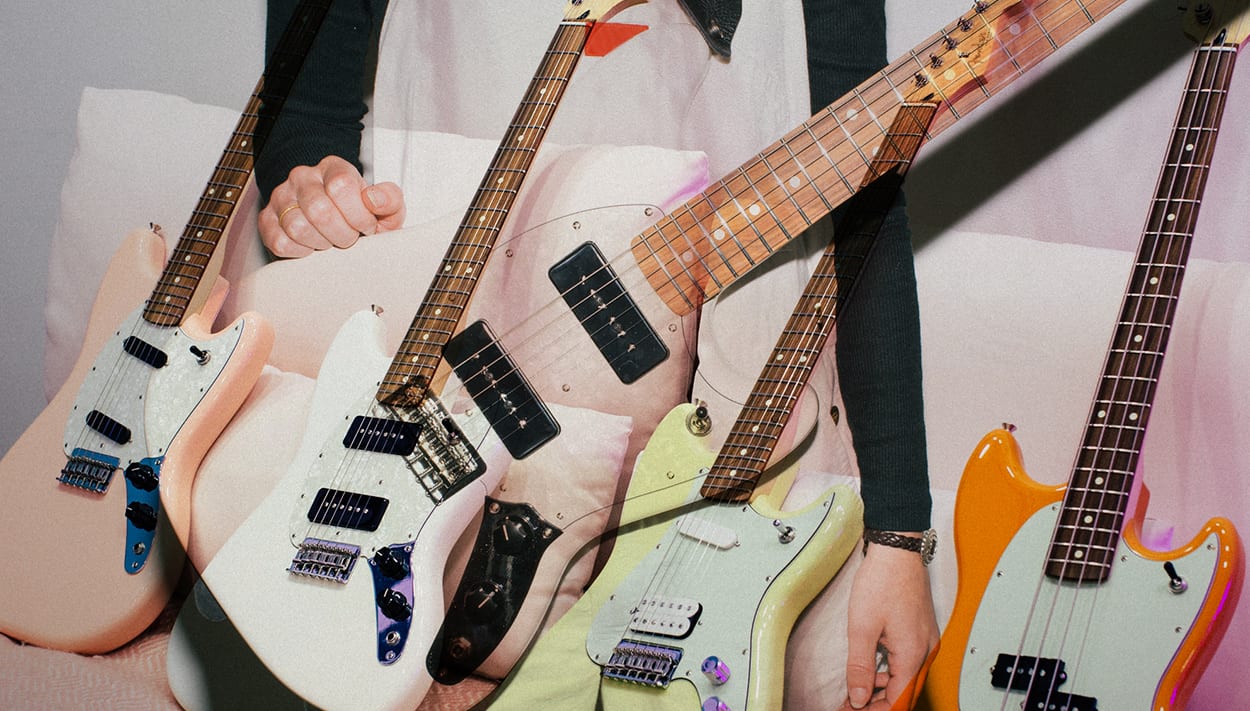
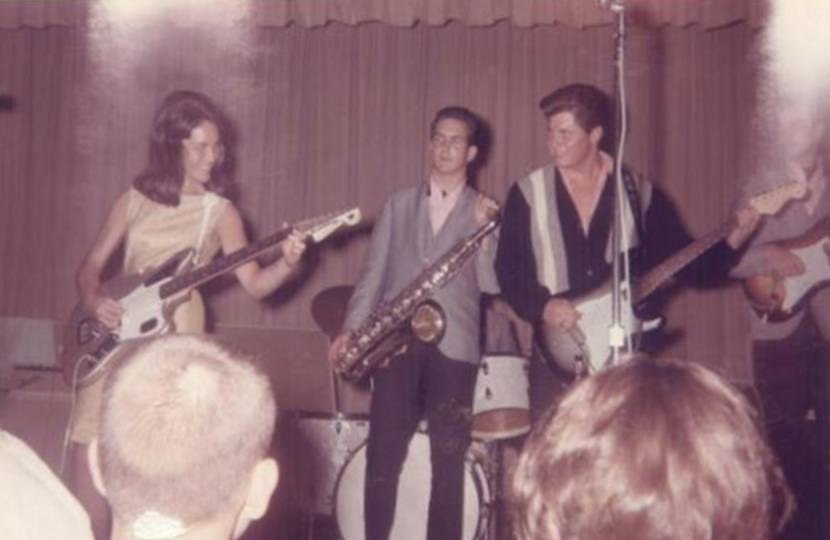 Kathy Marshall performing with Eddie and the Showmen in 1964 with her custom Jaguar
Kathy Marshall performing with Eddie and the Showmen in 1964 with her custom Jaguar

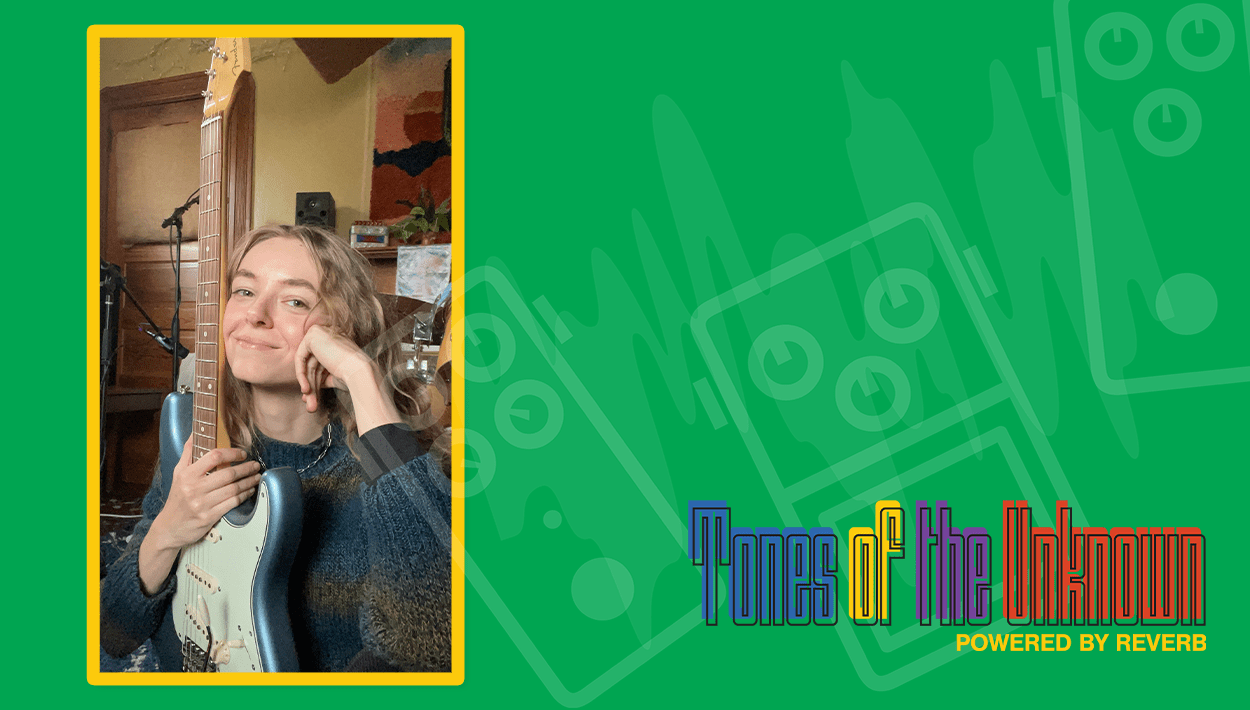
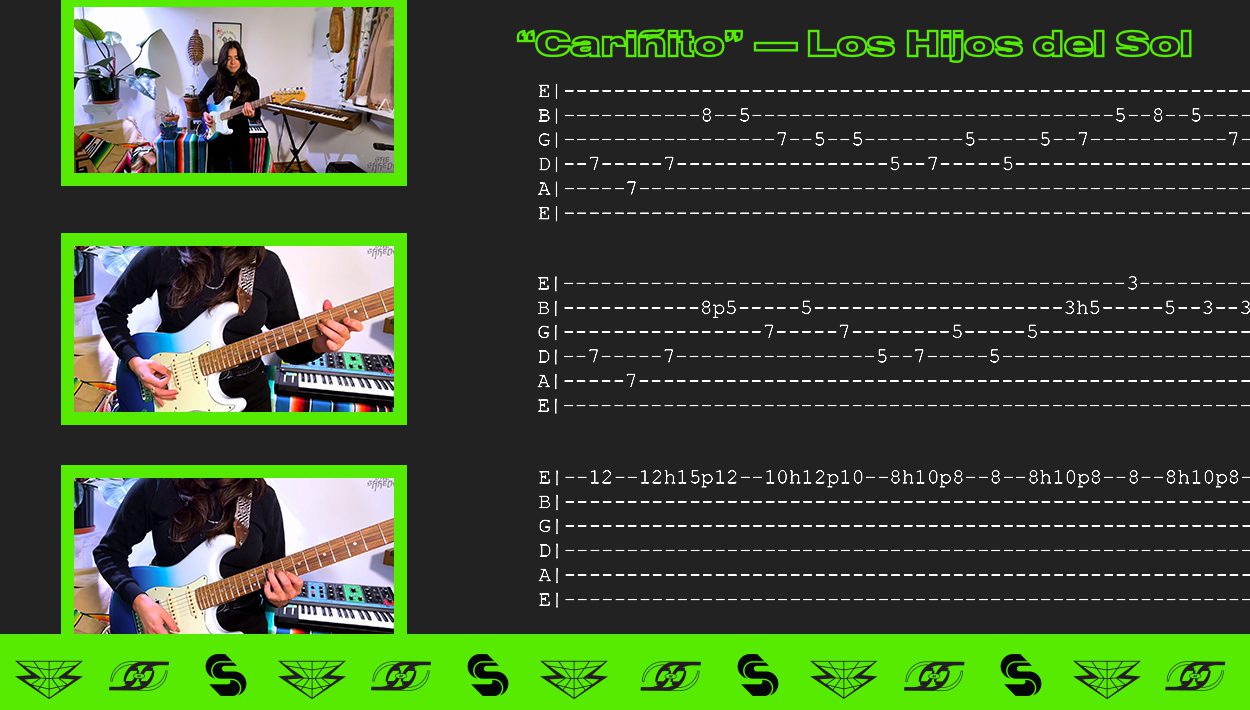



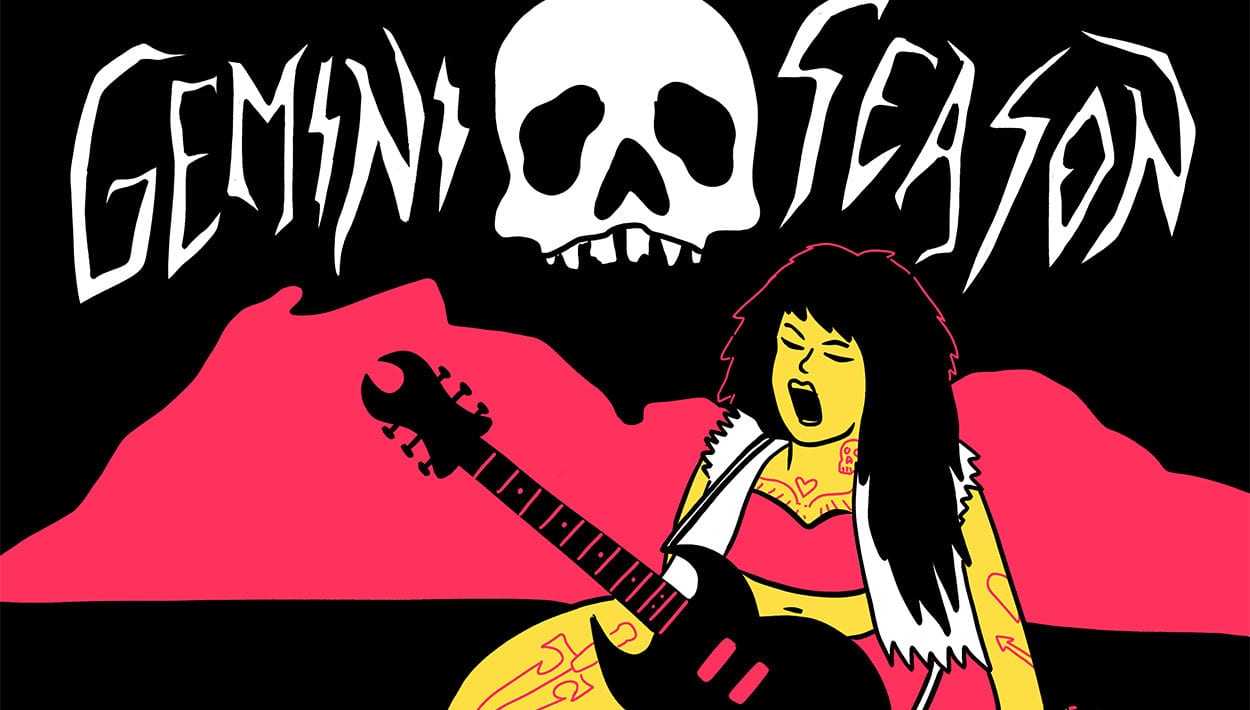

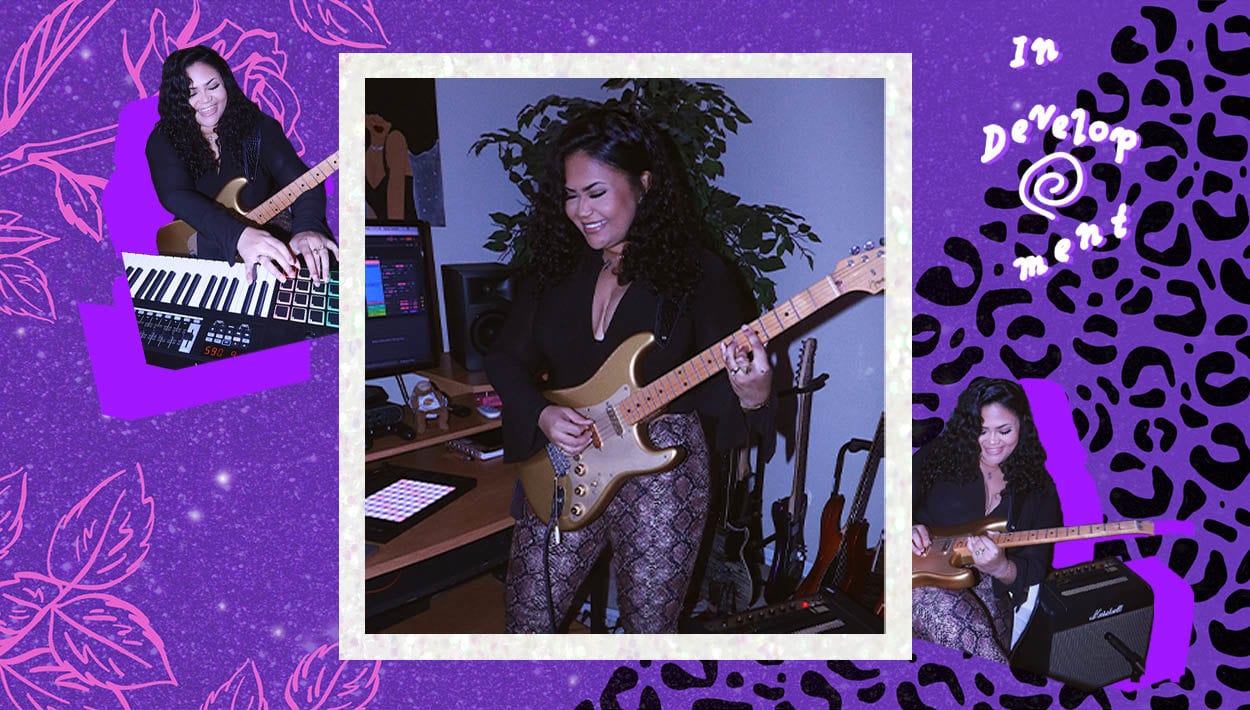



Comments
[…] and sound of modern music in the process. You can learn more about cultural impact of offsets here, and the evolution of the distinctively shaped instruments […]
Pingback by She Shreds Magazine - Win 'Em #3: Choose Your Own Fender Offset on December 21, 2017 at 12:06 pmThnska a loyt
Comment by jea on October 31, 2018 at 10:37 pmGood history rundown. Not that it really matters, but too often, the pre-Mustang body Duo-Sonics/Musicmasters are considered offsets, and they aren’t. Similarly, funny enough, Fender’s new Duo-Sonic isn’t an offset, despite being part of the offset series. It’s no more offset than a Strat, and those aren’t quite offset enough to fall into the category.
Comment by Julian on November 21, 2018 at 12:35 pm[…] these guitars haven’t historically been as accessible to lower income players as its Fender Offset sister series. However, if you can afford this guitar, and appreciate the quirky aspects of it, you […]
Pingback by She Shreds Media on August 7, 2020 at 11:40 am